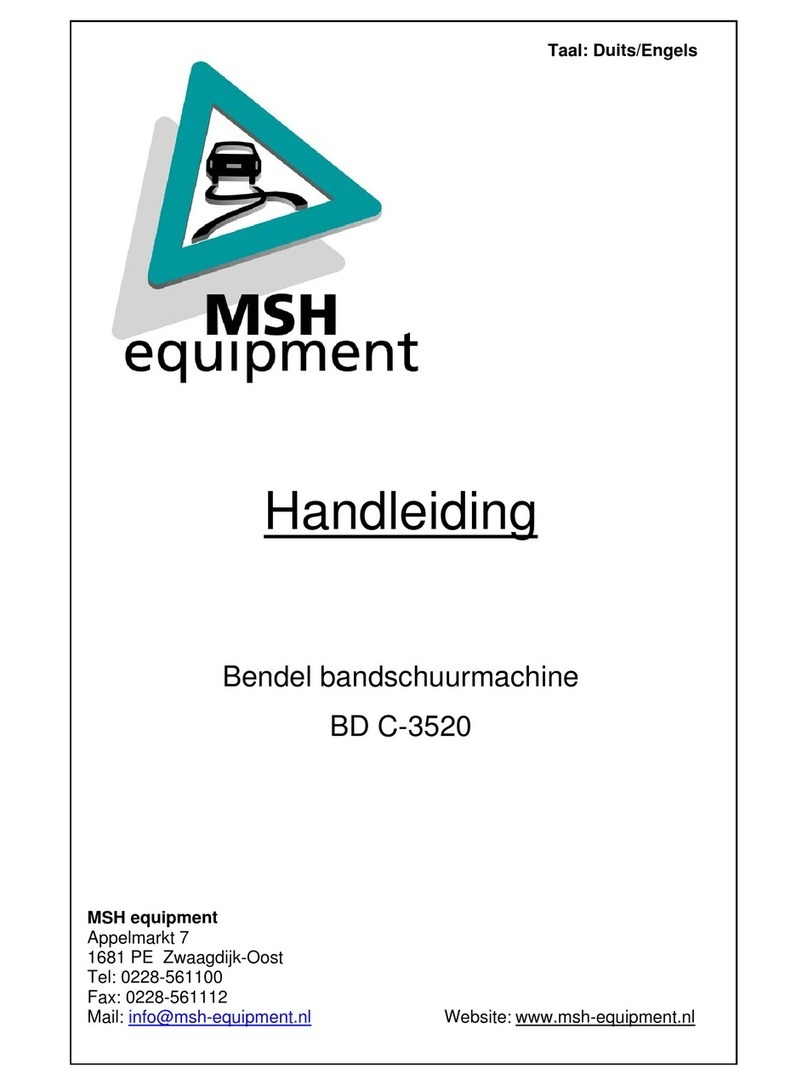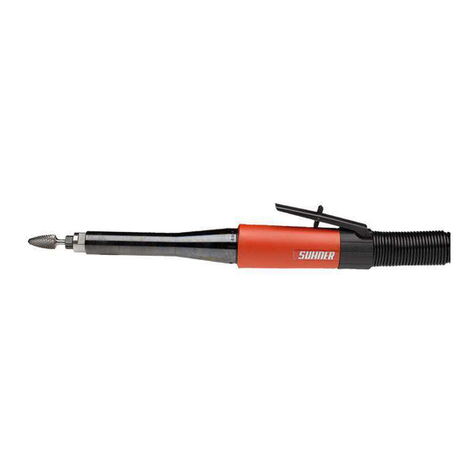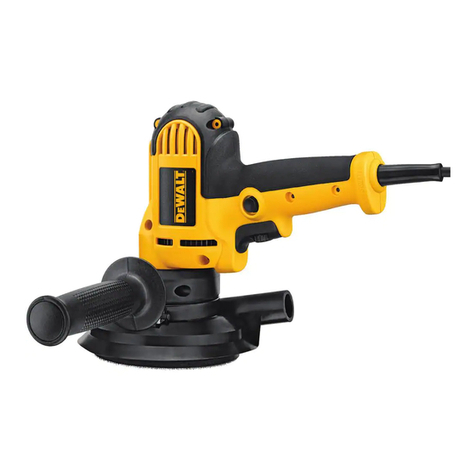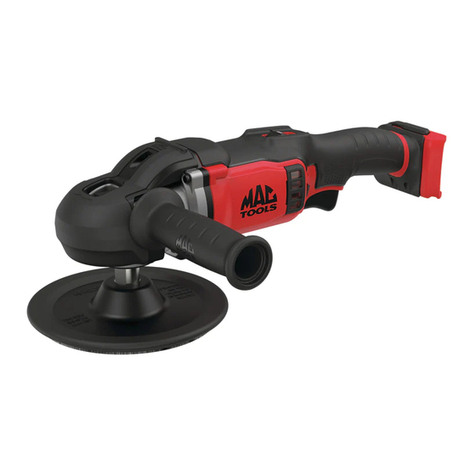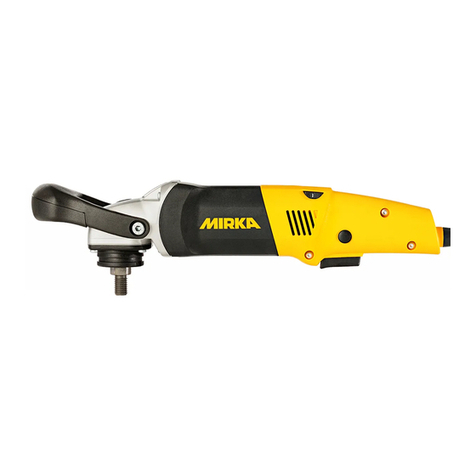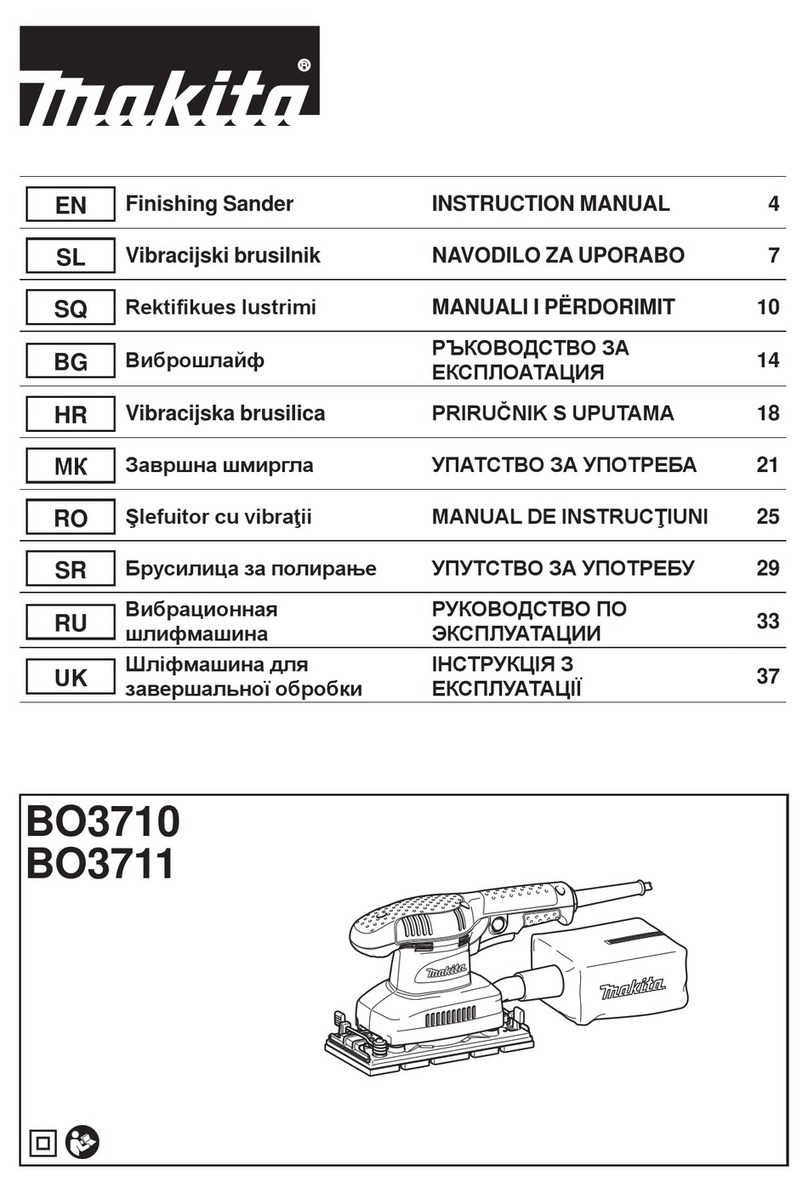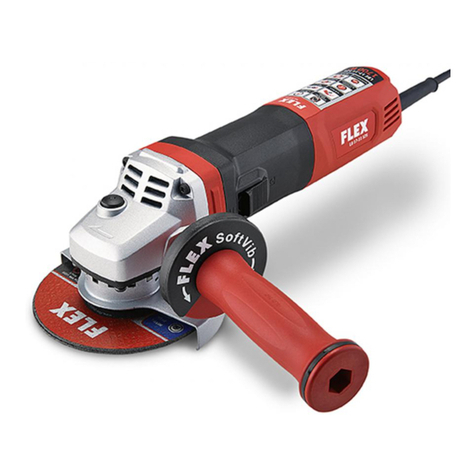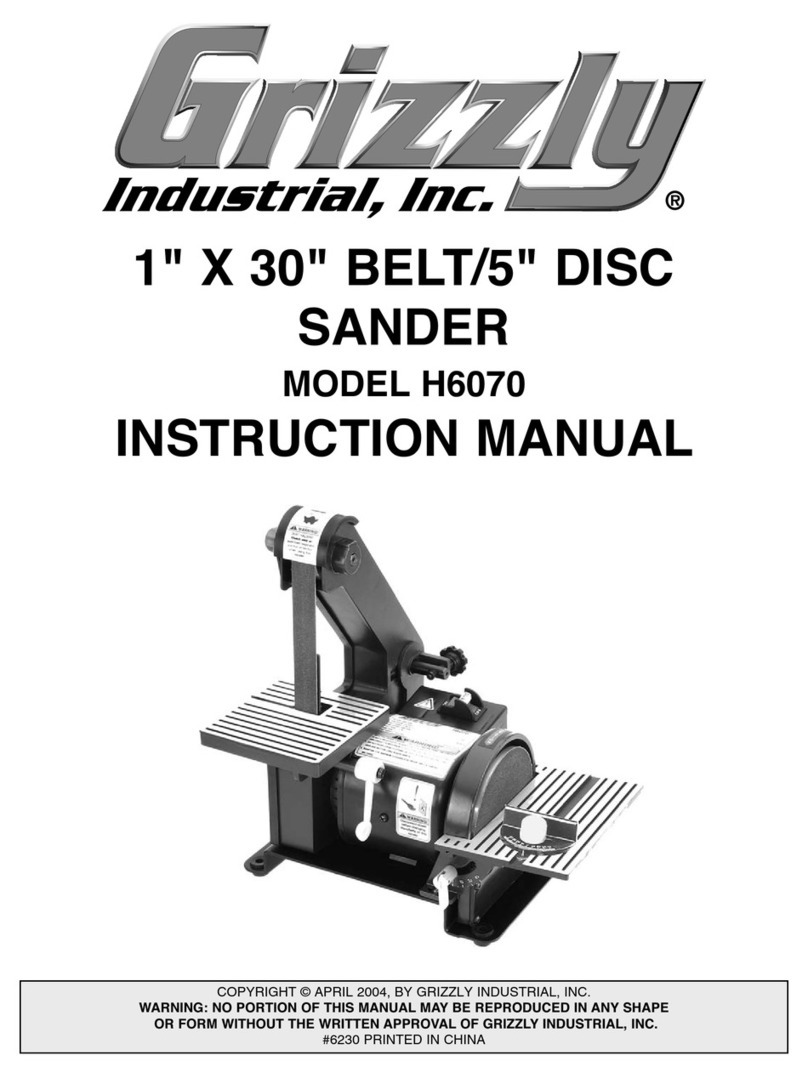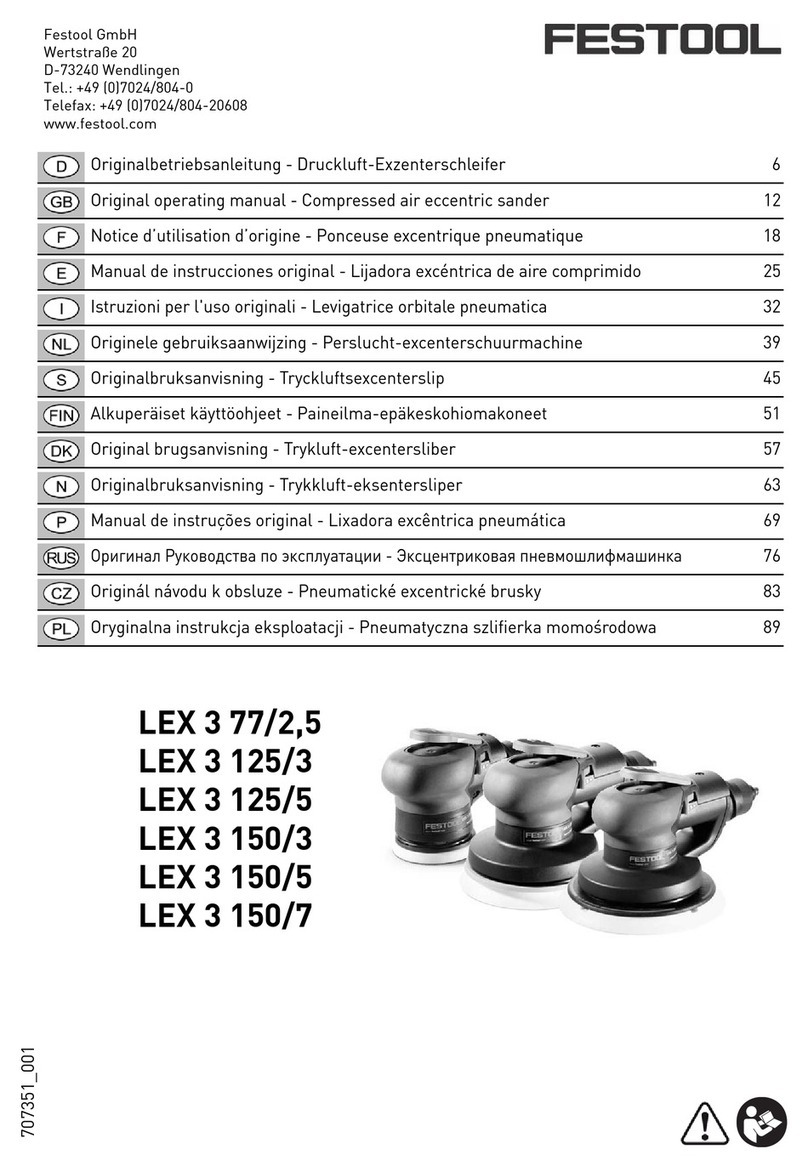TIS NCNA113 User manual

INSTRUCTION MANUAL for Sanders and Polishers
For our model:
NCNA113 SANDER
WARNING!! DO NOT DISCARD – BUT GIVE TO USER WARNING!!
Air supply requirements
Supply tool with 6.0 bar of clean, dry air. Higher pressure drastically reduces tool life
and/or can cause severe injury.
Connect tool to air line using pipe, hose and fitting sizes shown in the diagram above.
Do not install a quick coupler directly into the air tool throttle handle.
In order to have the tool working to full satisfaction the minimum air delivery must be at
least 10% higher than the indicated air consumption of they air tool.
Please consult the technical data in this instruction manual
.
Operation
To apply sanding strip, raise each lever on the end of sanding shoe. Place one end of
paper under clamp and lock lever.
Pull paper firmly over sanding shoe and secure clamp.
The free speed can be adjusted by means of the handle or the regulator (L – H).
If an extra support handle is supplied with the tool that it be fitted before the tool is used
and hold, if possible, the tool with two hands.

Lubrication
Use an airline lubricator with the oil set at two (2) drops per minute.
If an airline lubricator cannot be used then once a day add 1 to 2 drops special (SAE 10) air
motor oil into the air inlet.
Maintenance
Disassemble and inspect air motor and governor assembly every three months if the
tool is used every day. We prefer that you use our distributor to replace damaged or
worn parts.
Please use the spare parts list as a guide manual when dismantling or assembling the
tool.
High wear parts are indicted as service kit in the parts list. To reduce risk of injury,
everyone using, installing, repairing, maintaining, changing accessories on, or working
near this tool must read and understand these instructions before performing any such
task.
Pneumatic Sander and Polisher safety instructions
The goal is to offer tools that help you work safely and efficiently.
The most important safety device for this or any tool is YOURSELF.
Your care and good judgement are the best protection against injury. All possible hazards
cannot be covered here, but we have tried to highlight some of the important ones. This tool
and its accessories must not be modified.
This tool may only be use by qualified people.
For additional safety information consult:
The instruction manual and any leaflet packed with this tool.
Your employer, union and/or trade association.
Council of the European communities and/or local codes.
“ Safety requirements for hand-held non-electric Power Tools “. Available from:
European committee for standardization, Rue de Stassart 36, 1050 BRUSSELS,
BELGIUM.
Air supply and connection hazards:
Air under pressure can cause severe injury.
Always shut off air supply, drain hose of air pressure and disconnect tool from air supply,
when not in use, before changing accessories or when making repairs.
Put never direct air at yourself or anyone else.
Whipping hoses can cause serious injury. Always check for damaged or loose hoses
and fittings.
Do not exceed maximum air pressure of 6.2 bar or as stated on the name plate.
Do not use quick disconnect couplings at tool. See instructions for correct set-up.
Entanglement dangers:
Keep away from moving sanding pad.
Do not wear jeweled or loose clothing and avoid long hair.
Choking can happen if neckwear is not kept away from tool and accessories.
Scalping can happen if hair is not kept away from tool and accessories.
Avoid direct contact with accessories during and after use. Gloves will reduce the risk of
cuts or burns.

Projectile hazards:
Even small projectiles can injure eyes and lead to blindness.
Always wear impact-resistant eye and face protection when involved with or near the
operation, repair or maintenance of the tool or changing accessories on the tool.
Ensure all others in the area are wearing impact-resistant eye goggles and face masks.
Never operate the tool while not applying onto the articles. It may run too fast and lead
to the accessory to be thrown off the tool.
Workplace hazards:
Slip, trip and fall are main causes of serious injury or death. Be aware of excess hose
left on the path or work surface.
Maintain a balanced body position and secure footing.
High sound levels can lead to permanent hearing loss. Use hearing protection as
recommended.
Avoid breathing in dust or handling debris from work process, which can be harmful to
your health.
Operators and maintenance personnel must be physically able to handle the bulk,
weight and power of this tool.
This tool is not intended for use in explosive atmospheres and is not insulated for
contact with electric power sources.
Additional safety topics:
This tool and its accessories must not be modified.
Be prepared that the material your tool is made always can have material tiredness.
Never use this tool in explosive atmospheres.
Take care, the rotation of sanders is always to the right.
Grinding and cutting wheels must not be used with sanders.
Connect your sander always on a dust collecting bag or suction installation.
Tool applications:
Sanders: To remove layers of paint.
Polisher: To polish painted surfaces.
Explanation of the pictograms:
Always use hearing protection.
Always use face protection.

EC DECLARATION OF CONFORMITY FOR MACHINERY
(Directive 98/37/EC, Annex II, sub A)
Herewith declare, on our own responsibility, that the product:
SANDER NCNA113
Is in compliance with the Machinery Directive: 98/37/EC
TECHNICAL INFORMATION
Free Speed 2500 rpm
Air Inlet 1/4”
Work Pressure 6.2 bar
Max. Pressure 6.2 bar
Pad 2”
Weight 0.7 kg
Sound Pressure 96.6 dBa
Sound Power 101.8 dBa
Vibration Level 1.96m/sec
2
(prEN 8662-8)
- 4 -
Table of contents
Popular Sander manuals by other brands

MIRKA
MIRKA DEOS 343 operating instructions
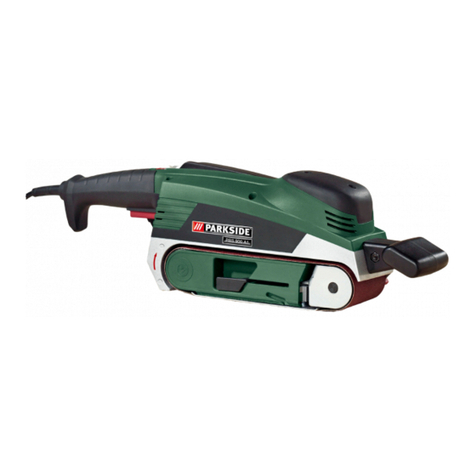
Parkside
Parkside PBS 900 A1 Operation and safety notes

Magnum Industrial
Magnum Industrial MI-16300 operating manual
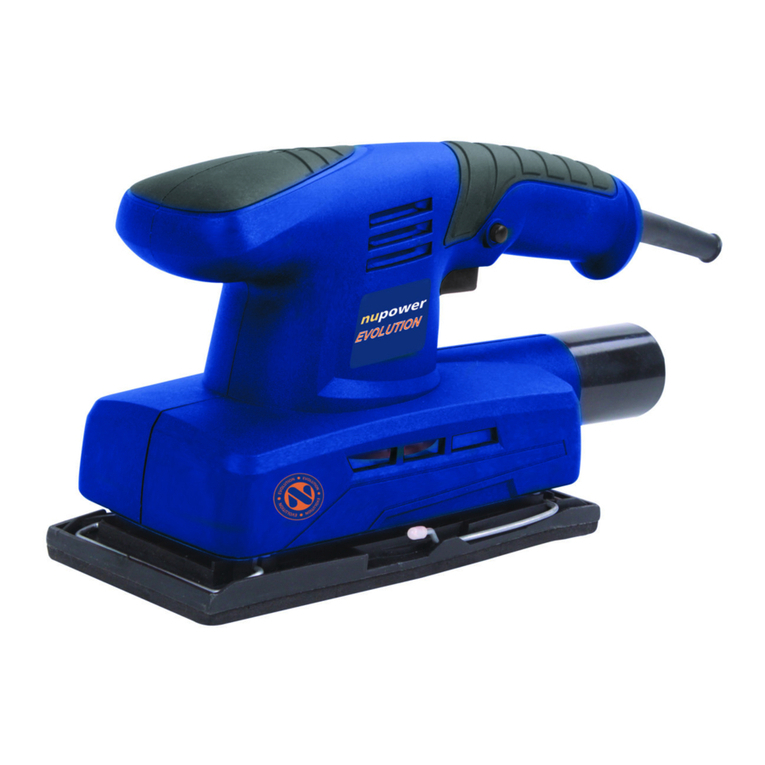
Nupower
Nupower EVOLUTION NPE136 Handbook
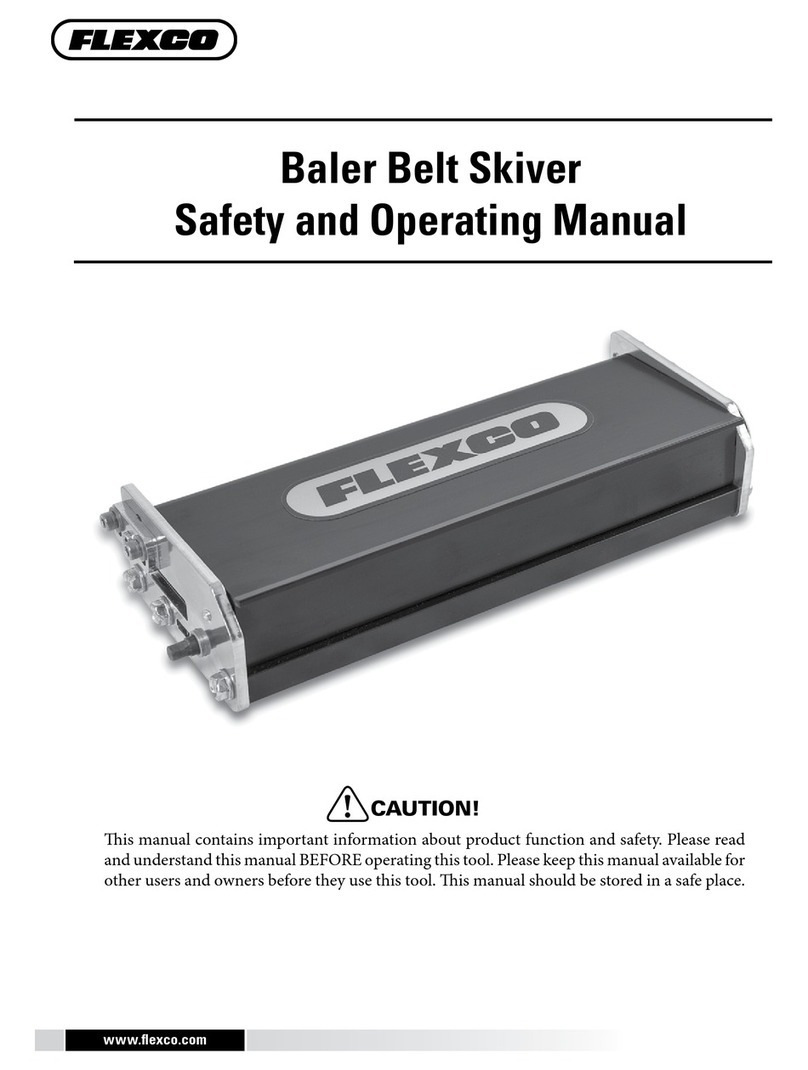
Flexco
Flexco Baler Belt Skiver Safety and operating manual
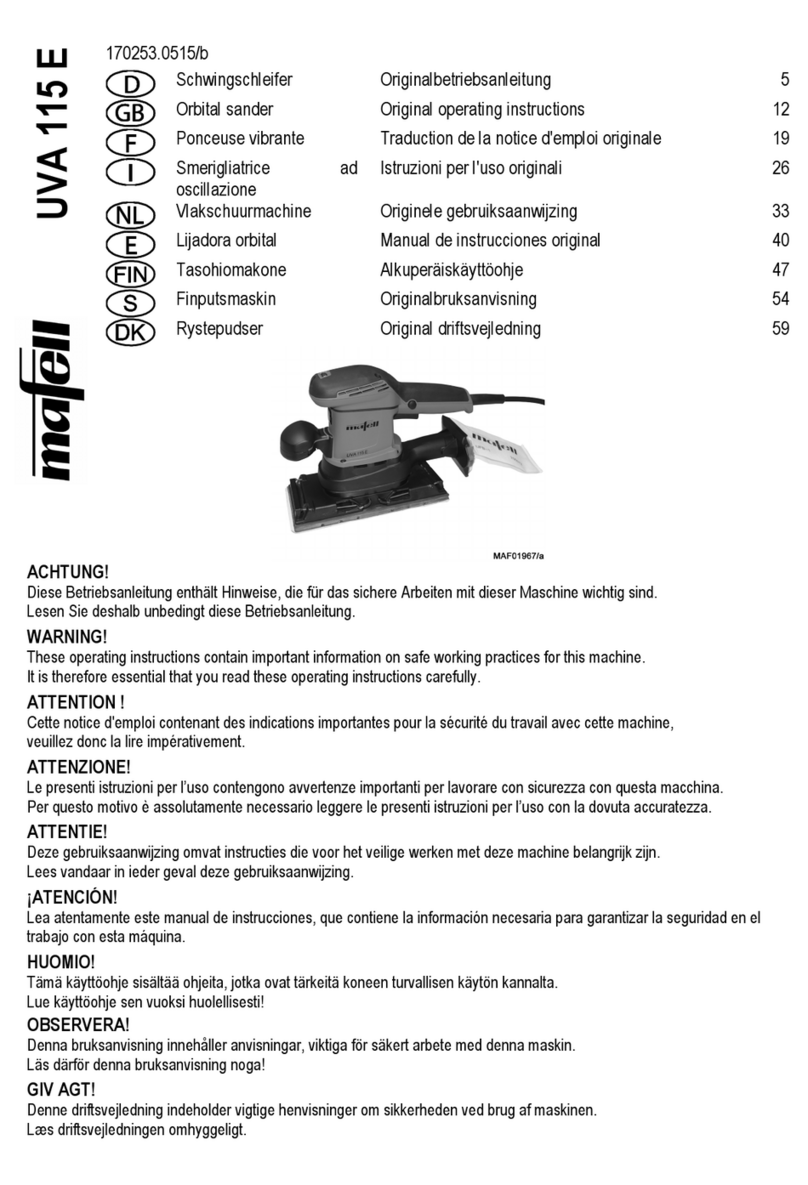
Mafell
Mafell UVA 115 E Original operating instructions
